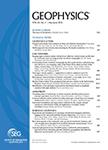版权所有:内蒙古大学图书馆 技术提供:维普资讯• 智图
内蒙古自治区呼和浩特市赛罕区大学西街235号 邮编: 010021

作者机构:China Univ Geosci Wuhan Sch Math & Phys Wuhan 430074 Peoples R China Cent China Normal Univ Dept Comp Sci Wuhan 430079 Peoples R China
出 版 物:《GEOPHYSICS》 (Geophysics)
年 卷 期:2021年第86卷第2期
页 面:V131-V142页
核心收录:
学科分类:07[理学] 0708[理学-地球物理学]
基 金:National Key R&D Program of China [2018YFC1503705] Science and Technology Research Project of Hubei Provincial Department of Education [B2017597] Hubei Subsurface Multi-scale Imaging Key Laboratory (China University of Geosciences) [SMIL-2018-06] Fundamental Research Funds for the Central Universities [CCNU19TS020]
主 题:convolutional neural networks deep seismic prior encoder-decoder seismic data reconstruction
摘 要:The reconstruction of seismic data with missing traces has been a long-standing issue in seismic data processing. Deep learning (DL) has emerged as a popular tool for seismic interpolation;it learns priors from training data sets of incomplete/complete data pairs. However, these DL methods are restricted to training data because they are supervised. When the features of the testing and training data are different, the recovery performance decreases, which prevents practical application. We have introduced a deep-seismic-prior-based approach via a convolution neural network (CNN), which captures priors based on the particular structure of the CNN, but it does not need any training data set. The ill-posed inverse problem in seismic interpolation is thus solved using the CNN structure as a prior, and the learned network weights are the parameters that represent the seismic data. Because the convolutional filter weights are shared to achieve spatial invariance, the CNN structure can function as a regularizer to guide network learning. In our method, corrupted seismic data are reconstructed during the iterative process by minimizing the mean square error between the network output and the original data. We applied our method for interpolating irregularly and regularlymissing traces in prestack and poststack seismic data. The experimental results indicate that our approach outperforms the traditional singular spectrum analysis and the dealiased Cadzow methods commonly used in the reconstruction of such data.